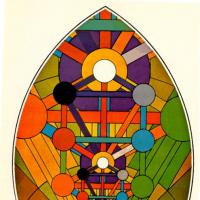So what exactly determines what's a suffix and what's a prefix?
글쓴이: ASCarroll, 2014년 4월 25일
글: 6
언어: English
ASCarroll (프로필 보기) 2014년 4월 25일 오전 1:08:31
morfran (프로필 보기) 2014년 4월 25일 오전 1:18:44
nornen (프로필 보기) 2014년 4월 25일 오전 1:28:10
morfran:Like most of the lexicon, Esperanto affixes are modeled on Romance ones, where there are analogous prefixes like pre-, prae-, and proto- and suffixes like -accio, -astro, etc.In which languages are there postfixes "-accio" and "-astro" and what do they mean?
(I just know Spanish "-astro" meaning "step-", like in padrastro or hermanastro.)
(Maybe Italian "-accio" for pejorative?)
morfran (프로필 보기) 2014년 4월 25일 오전 1:38:35
nornen:In which languages are there postfixes "-accio" and "-astro" and what do they mean?Italian -accio is the specific suffix Esperanto gets -aĉ- from. It derives from Latin -aster, -astr- “petty”, “incomplete”, and turns up in the Romance languages (and English) in a variety of forms with a variety of pejorative (or semi-pejorative) meanings, including “step-”.
sudanglo (프로필 보기) 2014년 4월 25일 오전 10:38:39
Most suffixes act in the same way as normal word building works, but some don't.
Stacidomo (station building) is a sort of domo, just as kombilo (a comb) is a sort of ilo.
But domego (very large building/house) is not a sort of ego, and dometo little building/cottage is not a sort of eto. They are both sorts of domo.


